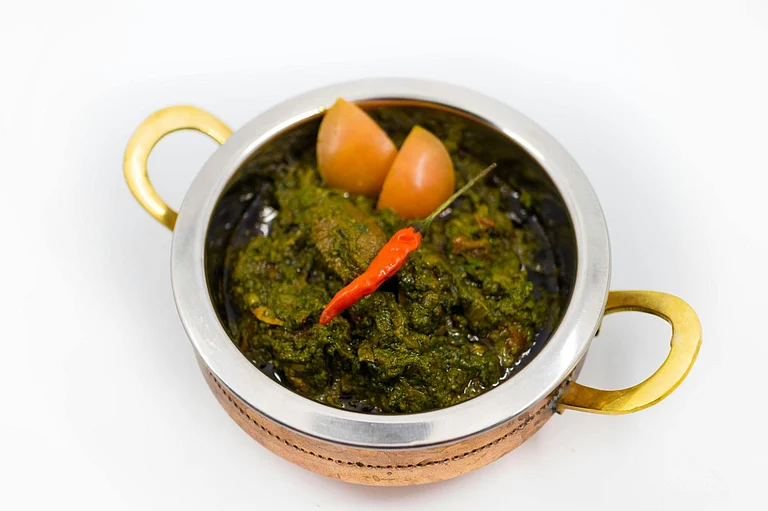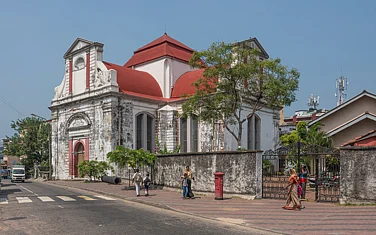Onam, or Thiruvonam, is an annual harvest festival in Kerala and is fast approaching. The vibrant festival symbolizes prosperity, unity, and cultural heritage. The 10-day celebration marks the homecoming of the mythical king Mahabali, known for his generosity and righteous government. Among several rituals and customs, Onam Sadhya holds a significant place in the hearts of the Malayali people. With the aura of the festival, the culinary scene comes alive with a range of vegetarian food. Onam Sadhya is a multi-course vegetarian feast served on a banana leaf, showcasing the rich culinary heritage of Kerala, deeply rooted in its culture and history. Let’s take a look at what Onam Sadhya is and how the feast is so important to the Keralites people.
Onam Sadya and its significance:

Kerala people serve Onam Sadya, a flavorful meal on a banana leaf, to commemorate the harvest celebration. During the Onam celebration, the 10th day of Thiruvonam, when the festival culminates, Sadya is beautifully offered to the people, which features 26–28 delectable dishes that can go up to as many as 64 dishes. The dishes comprise sweet, sour, salty, and spice tastes that flaunt the rich, sumptuous meals and flavours of Kerala.
The dishes include sambal, papad, rice, rasam, curries, Pachadi, pickles, and a variety of sweets. Sadya is more than mouthwatering gastronomic experiences; the festival carries the weight of mythology, ties the community together, and upholds tradition. The tradition of Sadya requires a lot of preparation that begins in advance to bring the communities together to create memories and an unforgettable event.
The art of serving Sadhya

Sadhya is a mouthwatering exclusive culinary experience served on a banana leaf known as ‘Vazhayila’ in a specific order from the top left corner and moving towards the centre of the leaf. The meal consists of fried vegetables, sweet dishes, Sharkara Varatti, pappadam, Avial, Erissery, Thoran, Mezhukkupuratti, Kootu Curry, rasam, Olan, Sambhar, Parippu Curry, Pachadi, Payasam, Pulissery, pickles, etc. are included in the sumptuous feast. The meal is eaten with the hands and not spoons. The delectable foods ensure a balanced intake of vitamins, minerals, carbohydrates, proteins, etc. Each dish is a testament to Kerala's rich culinary tradition, carefully crafted to offer a balance of flavours that reflect the abundance of the harvest season.
Here are some of the Sadya dishes that you must have:
Pappadam

Onam Sadya is incomplete without Pappadam, an essential crispy wafer made from ground lentil flour Pappadam adds a delightful crunch to the Sadya.
Upperi

Another crispy dish is Upperi, which adds a salty and crunchy flavour to your Onam Sadya. The dish is made from sliced cassava or dry vegetables mixed with coconut milk or spices, coated in a batter of rice flour. Try this delightful crunchy dish that adds a unique taste to your Onam celebration.
Pachadi

Another masterpiece in Onam Sadya is Pachadi, which is made with coconut, curd, and some south-Indian spices, making it a unique and delicious taste to enjoy during Onam. Pachadi as a side dish adds a refreshing and cooling element to the overall taste of the Sadya.
Mezhukkupuratti

Mezhukkupuratti is a spicy and delicious dish made by frying raw bananas and beans in coconut oil with some spices on them. They are cooked well until brown to give it a distinct flavour and texture. The dish goes well with rice and other curries, adding richness to the meal.
Naranga Curry
Want to taste something tangy and delicious? Then there is a beautiful aromatic option of Naranga Curry, which includes tangy tamarind, lemon, aromatic spices, and ripe naranga (orange) fruit. It is accomplished with rice adding a savory taste to the feast.
Ellisery

Ellisery, A spicy curry made with a slice of sweet tone from pumpkin and coconut along with mustard seeds and curry leaves will make the meal more zesty and memorable. The pumpkin dish adds a healthy texture with its rich flavor giving a balance to the other 26 dishes in the Sadya.
As per the culture, the meal begins with a prayer or a moment of gratitude towards gods, followed by the diners mixing rice with the lentil curry (Parippu) and ghee, followed by the other curries and accompaniments. The sweets, or payasam, are served towards the end, offering a sweet conclusion to the feast. Each dish is significant, meaningful, and prepared with great joy and care.
Conclusion:
Onam Sadya is important as it reflects the cultural aspects of Kerala; the celebration brings people together above caste and religion. The feast symbolizes humanity and equality among people. Celebrate Sadhya with your family and friends and make your Onam Sadhya a memorable one. Whether you enjoy the auspicious feast in the traditional setting of a family gathering or a more modern context, the Sadhya continues to be a cherished part of Onam, bringing people together in a shared experience of joy, gratitude, and delicious food.
Happy Onam!



























